Odoo 15 Invoice Module Community Version
Every business needs to keep accurate and well-structured financial records. Odoo's Accounting module enables us to maintain accurate financial records and streamline the organization's finances. Accounting and finance management are critical components of any business's operations. Furthermore, the majority of corporations and organizations designate a specialized department to deal with the finance management operations for all of the company's ongoings. Dedicated operational tools are much-needed tools nowadays for every accounting and financial management need, as each of the entries and components of the financial operations should be kept and monitored. Odoo is a dependable business management ERP solution that includes a comprehensive accounting management tool. The Odoo platform, which is available in two editions, Community and Enterprise, is the greatest solution for business management operations on the market.
The Community Edition includes all of the necessary tools and features, making it ideal for businesses with a small number of users. Furthermore, in comparison to the Enterprise edition, the community edition allows for just a limited amount of customisation. However, the Community edition's Invoicing management module, which includes Accounting management features, is a well-structured business management solution that most firms require today. Odoo 15, the most recent version of the Odoo platform, was released lately and includes a number of enhanced tools and solutions for better business administration than its predecessor.
The Invoicing module in the Odoo community edition manages an organization's bookkeeping. The Invoicing module has several tabs, such as Dashboard, Customer, Vendor, Accounting, Reporting, and Settings, that help us run the organization's Invoicing and Accounting efficiently.
Odoo 15 Invoice Module Community Version
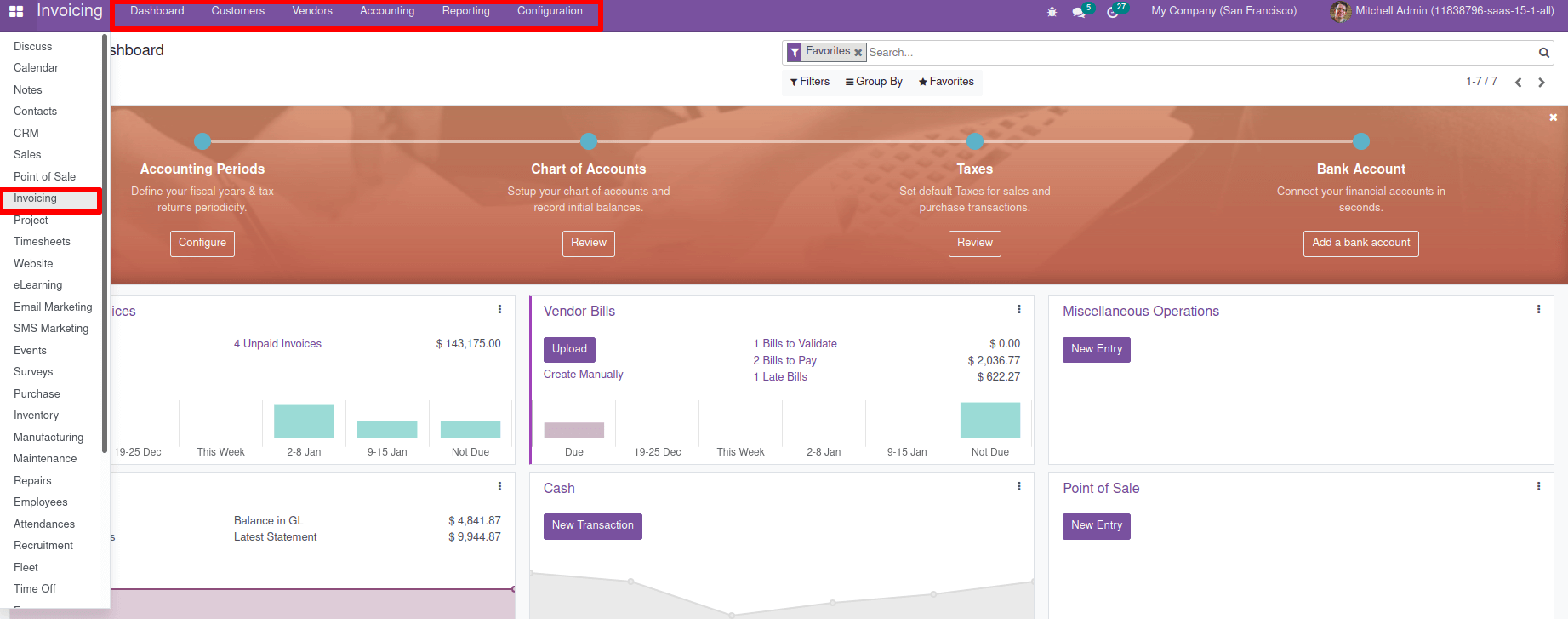
Odoo 15 is more advanced than Odoo 14, thus it has included certain changes from the previous version. Aspects of accounting are also affected by some of these changes. The Accounting tab, which is a vital component in the finance management operations of organizations using the Odoo Community version, has a new function in Odoo 15.
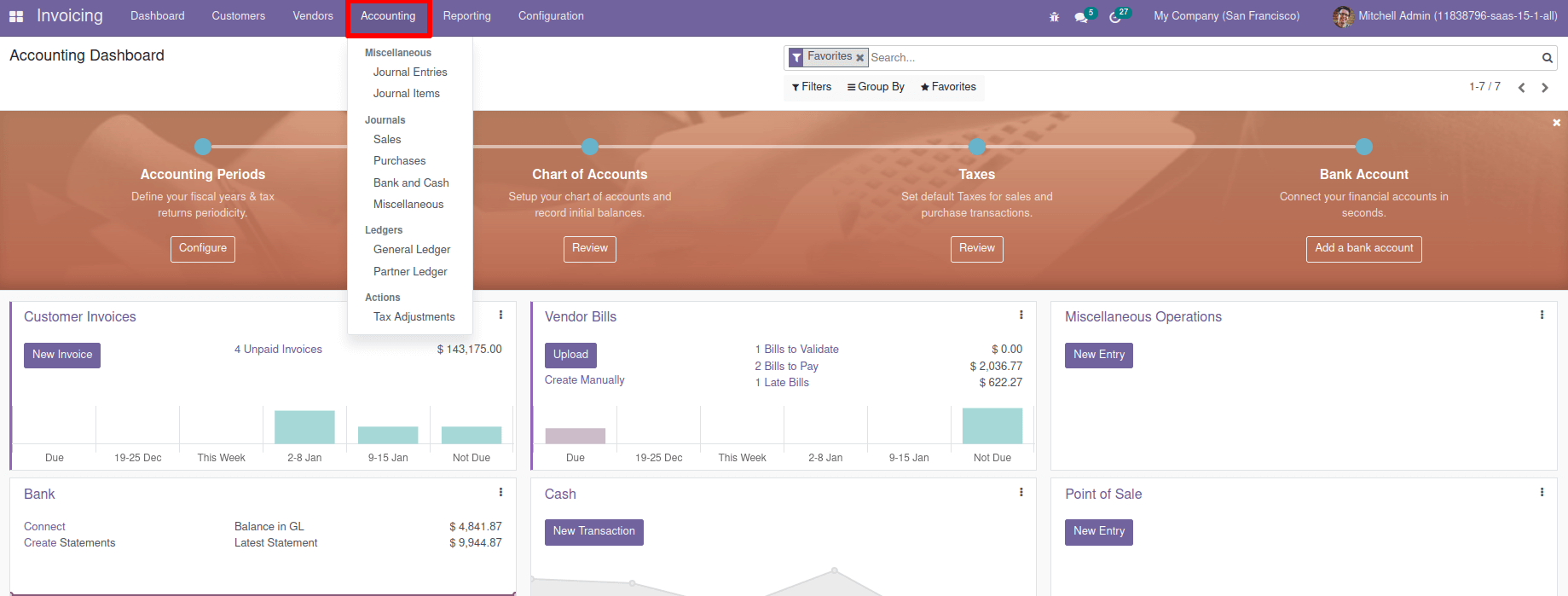
The Accounting tab in the invoicing module is not available by default in the community version of Odoo 14, but it can be enabled on the user page. In the Odoo 14 community version, go to the Setting module and turn on Developer Mode to get the Accounting menu. Select the user from the list under Users & Companies > Users. The Accounting tab is a crucial menu in invoicing because it contains journal entries.

On the user page, there is a section called 'Technical' where you can enable the Show Full Accounting Features option and then choose the Save option.
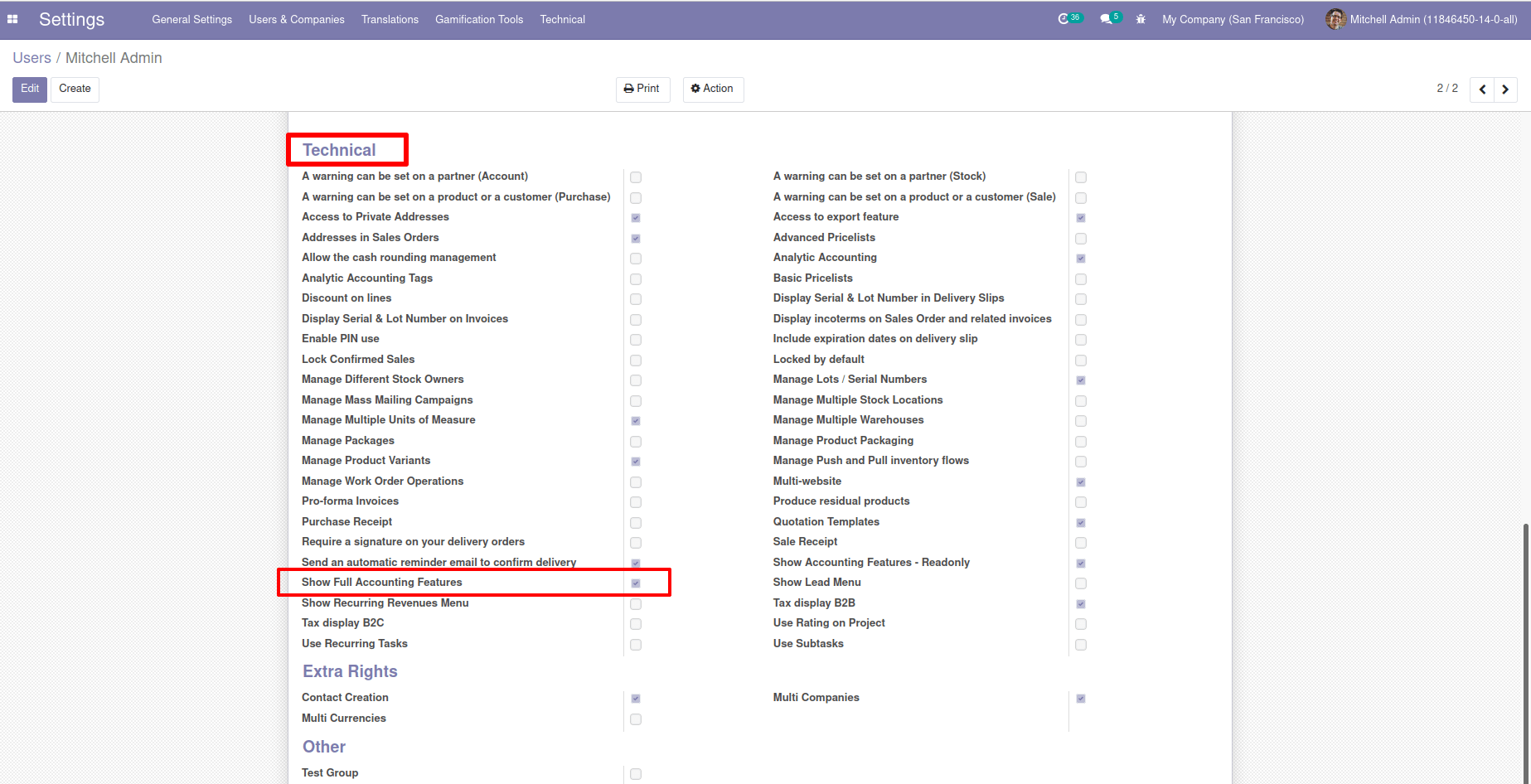
Examine the module for invoicing. After you enable it, you'll see that a tab Accounting appears, as shown in the screenshot below.

Because the Invoice module in Odoo 15 does not have an accounting tab by default, we must enable several capabilities from the settings module in the community version of Odoo 15. To access the same Accounting tab we need to activate Developer Mode in Odoo 15 Community version, go to Settings. Then pick the Groups option under the User & Companies menu.
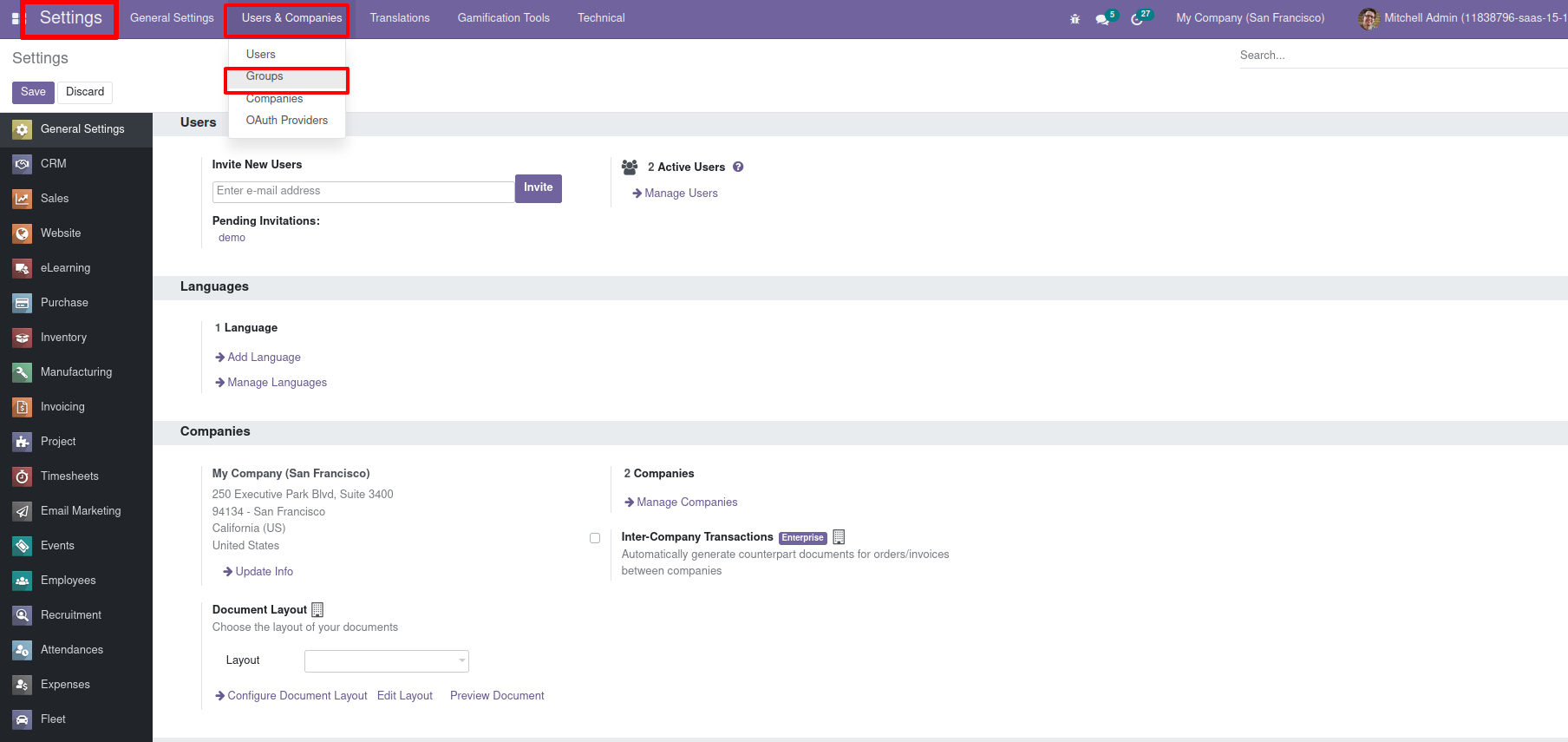
We get a list of all accounting functions when we filter with 'Accounting' in the Groups menu, as seen in the screenshot.

Add a user to the user field by selecting Technical/Full Accounting Features.

Using the Create option in the menu, we can choose or create a user from here.

Once the desired user has been added, save it.

The Accounting dashboard and the Accounting menu will be displayed in the Invoicing module.
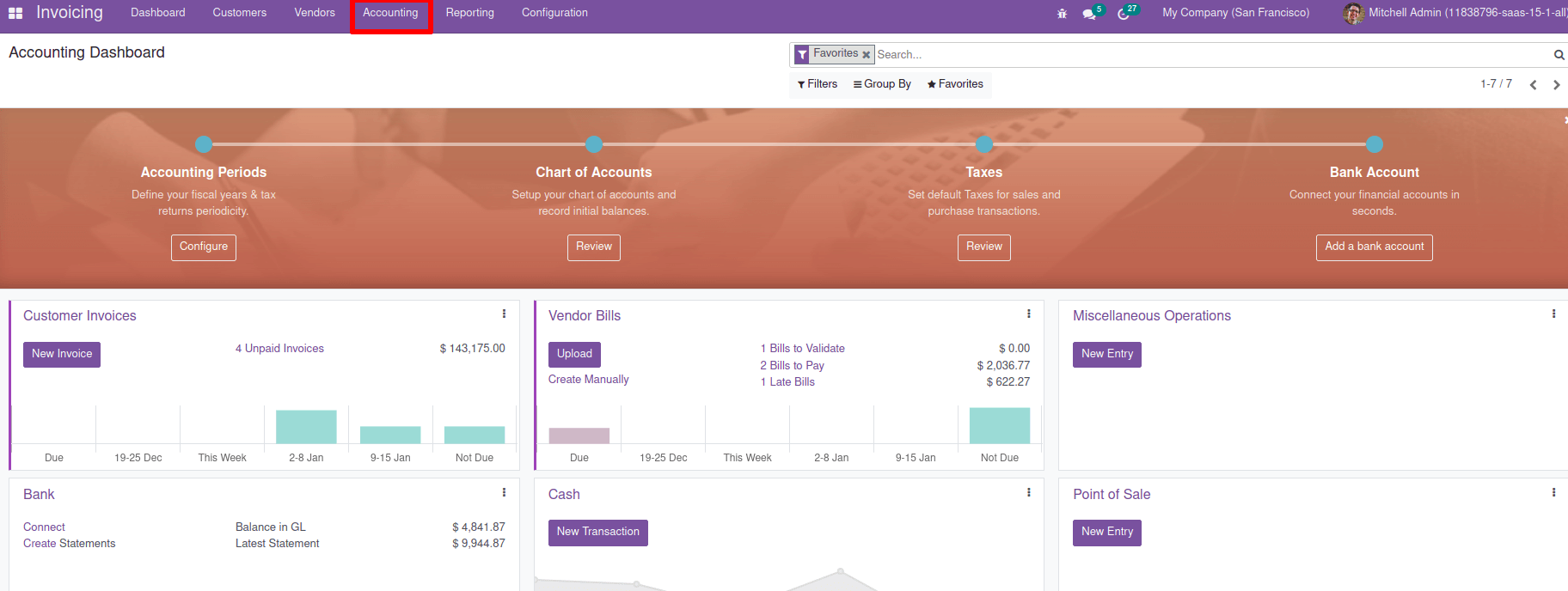
Once we enable complete Accounting functionalities, the Accounting menu and dashboard will be available. Under the Accounting tab, you will also be able to view accounting components such as journal entries, sales journals, purchase journals, bank cash, and other miscellaneous accounting information. The General Ledgers and Partner Ledgers can also be accessed in the Accounting tab's Ledgers list.
The Journal Entries tab contains all of the journal entries that have been created. The Date of Creation, Journal Entry Number, Partner, Reference, the related Journal of the entry, Status, and the Total amount of the entry may all be seen here. You can start a new journal entry by clicking the create button.

In the Creation window, we can enter a Reference number as well as Journal items. The Journal Entry's status is set to Draft until it is saved, at which point it will be tuned to the post-stage while being posted.
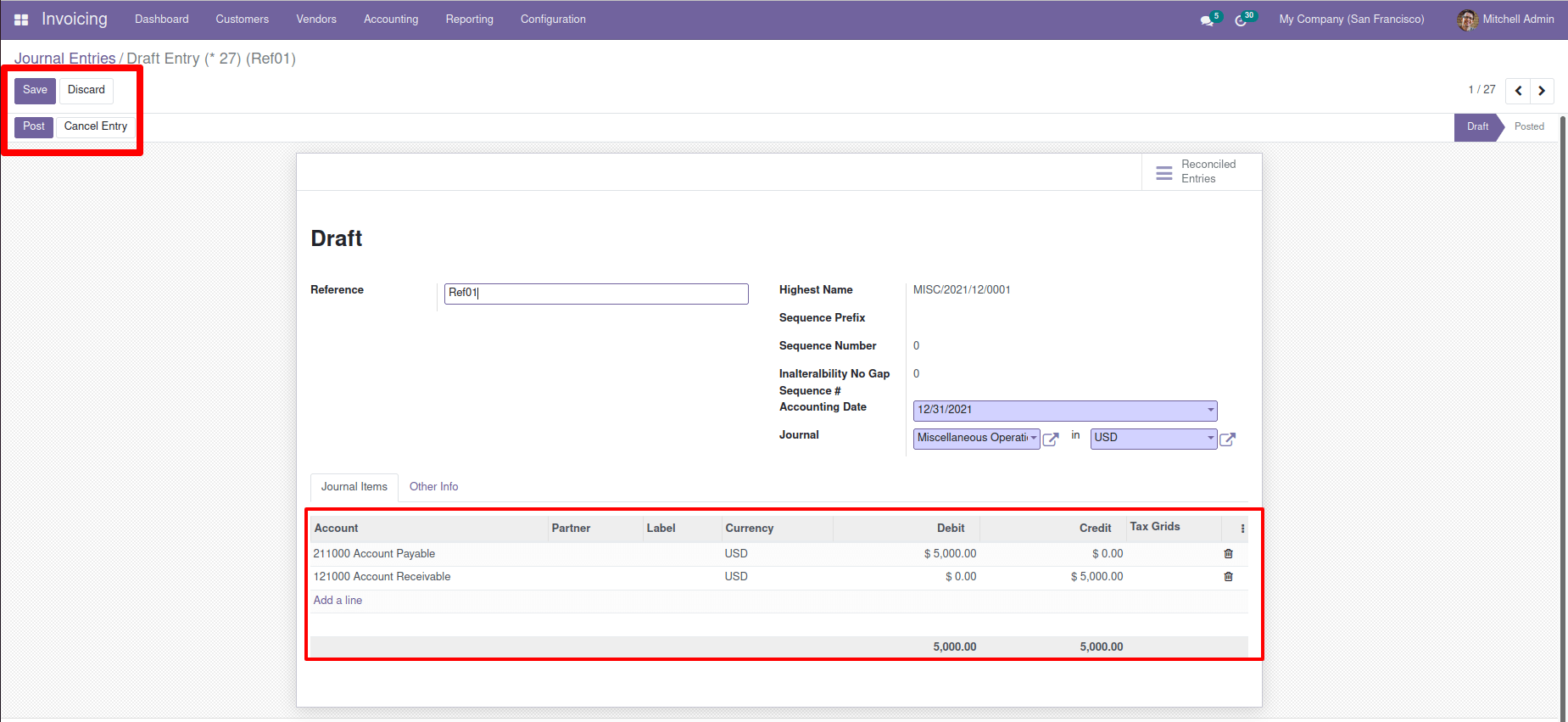
Journal
The four types of journals defined in Odoo are Sales, Purchase, Bank & Cash, and Miscellaneous. We can track the sales of products and services to clients using the Sales Journal. The Affected Account, Journal Entries, Partner Data, Due Date, Amount, Debit and Credit Amounts, Taxes Involved, Entry Labels, and many other components of the Sales Journal Entry will be shown. By default, we get all of the uploaded sales diary entries, which we can unfold to see.

The buy diary, like the sales journal, keeps track of all of the company's purchases (credit). The Purchase Journal, on the other hand, illustrates the company's financial elements of product purchase; this could be a complete product, raw material, or services that have been subscribed for. By default, we get all of the uploaded purchase journal entries, which we can unfold to see.

Bank and cash transactions are recorded in the Bank and Cash journals. All bank and cash journal entries are displayed here, with fields such as Account, Label, Credit, Debit, and many others. There are several perspectives to choose from, including list view, pivot view, graph view, and kanban view. By default, we receive all posted cash journal entries and bank journal entries, which we can unfold to view.

The Miscellaneous Journal contains any invoices and payments that cannot be utilized in the Sales, Purchase, Bank, or Cash Journals. By default, we get all of the posted Miscellaneous journal entries, which we can unfold to view.

Ledger
A ledger is an important component in accounting that helps us understand our financial transactions. There are two types of ledgers: general ledger and partner ledger.
The General Ledger records all of our company's transactions in several accounts. Fields like Partner, Label, Credit, Debit, Cumulative Balance, and many other aspects of information in the Odoo platform's General Ledger offer us with a comprehensive picture of our company's financial operations.
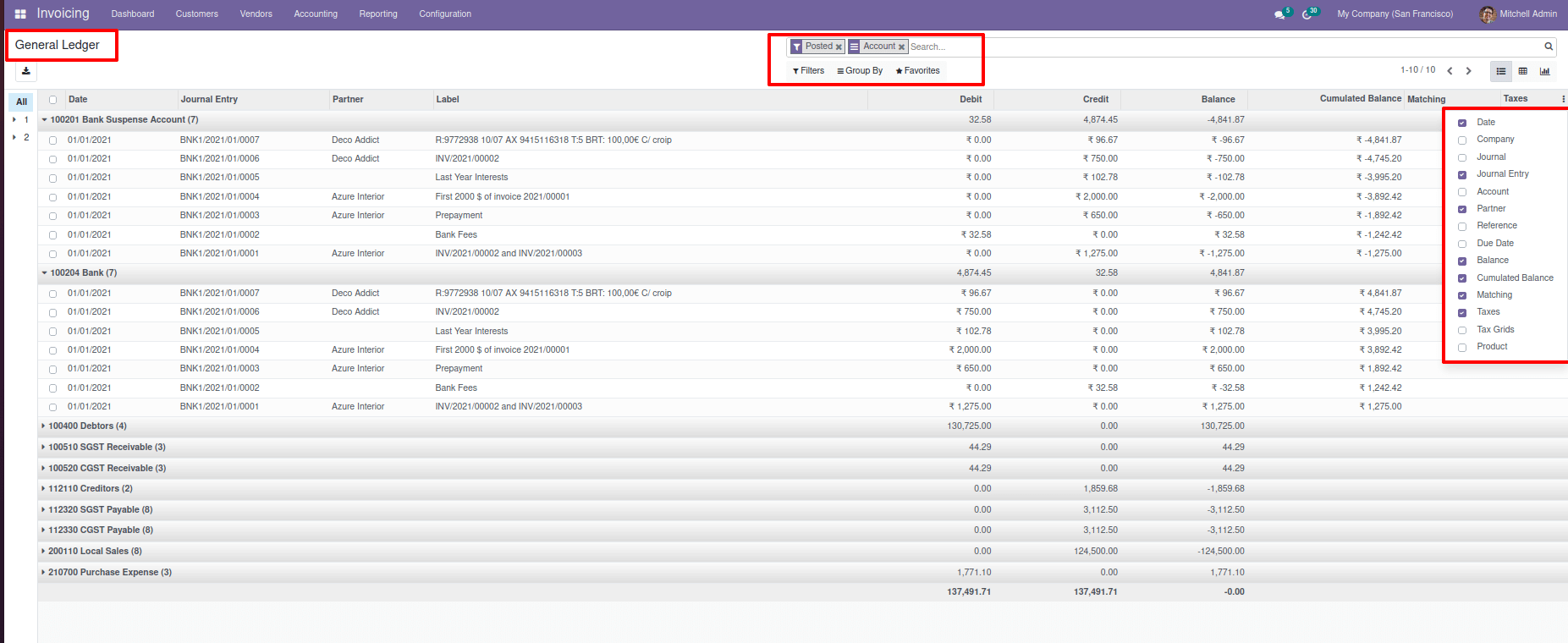
From a Partner Ledger, we collect all transaction details of Partners. When you open a Partner Ledger by default, you may see all unreconciled and posted information for all Payable and Receivable transactions of all business Partners. We can look at the transaction details by opening them up. We can see all of our company's credit and debit transactions from vendors and customers by deleting all of the applied filters.

The Odoo Community edition's Invoicing modules Accounting feature allows businesses to manage their whole financial management of their operations from a single platform. Furthermore, the platform's integrated approach, in which the Odoo platform serves as a comprehensive all-in-one solution, allows business management activities to be taken to the next level.
Odoo 15 Invoice Module Community Version